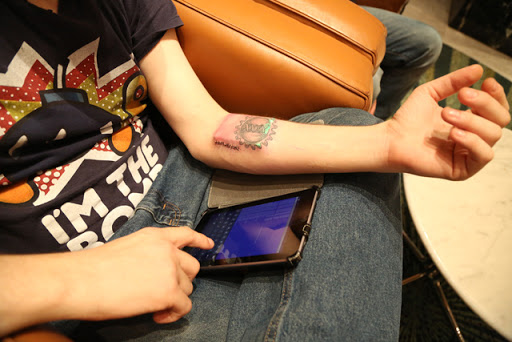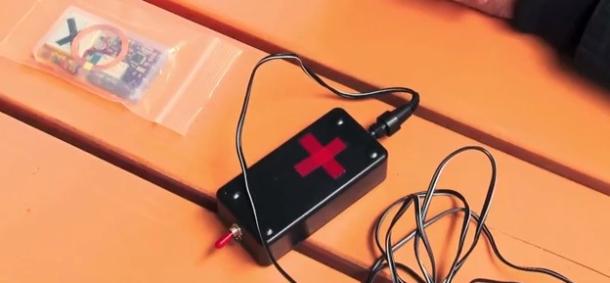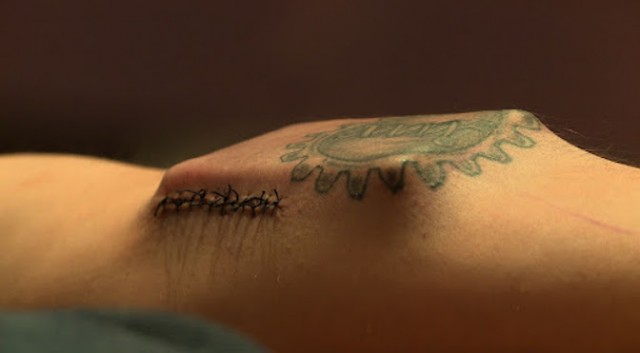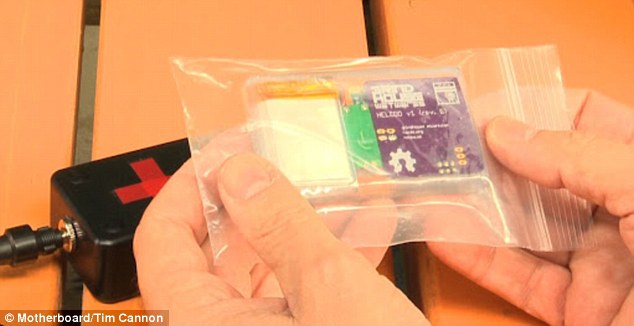This Man Implants A Smartphone-Sized Sensor Into His Arm To Become The First Cyborg
Meet biohacker Tim Cannon, the so-called “DIY Cyborg” who implanted a Circadia 1.0 computer chip the size of a smartphone under the skin of his forearm.
Biohacker Tim Cannon has become the first human being to have a non-medical computer implanted inside his body
In what could be considered the ultimate in wearable technology, a biohacker has inserted a computer under his skin.
The biometric sensor is fitted into German-based Tim Cannon’s forearm - between his skin and tissue - and tracks changes in his body’s temperature.
German-based biohacker Tim Cannon fitted the biometric sensor, pictured, under the skin on his forearm.
Image via ubergizmo.comThe Circadia 1.0 is about the size of a small smartphone and was implanted in Tim’s forearm without the aid of anesthetic or a licensed doctor. The device is designed to gather biometric data and beam it to a mobile device, making Tim Cannon the first DIY cyborg.
 dvice.com
dvice.com
The wirelessly charged sensor was developed over the course of 18 months by Cannon and his fellow hackers/artists at Grindhouse Wetware
The device was conceived and developed by Tim and his colleagues at Grindhouse Wetware. The project is completely open with all the code and designs posted on the Google Code site.
While it might look like it, Tim Cannon did not have an iPhone implanted in his arm.
Image via extremetech.comCircadia 1.0 is built on top of the Arduino Pro-mini and utilizes wireless charging, which is far preferable to running a USB cable to the implanted device whenever it needs a boost.
inhabitat.comIt can connect wirelessly to any Android device, produce readouts of the temperature changes and send Cannon a text message if he’s suffering from a fever, for example.
dailymail.co.ukThe Circadia 1.0 isn’t huge in the context of computing devices, but it’s awfully large for something that’s going to be implanted under the skin.
Just after his procedure, Tim Cannon described himself as exhausted and excited. (Credit: Video screenshot by Leslie Katz/CNET)
Image via cbsistatic.comCannon told Vice’s Motherboard that Circadia 1.0 could “send me a text message if it thinks that I’m getting a fever.” The device could then help determine what factors are causing the fever. Future versions of the sensor are expected to monitor the pulse and — thankfully — come in a smaller, less ghastly package.
Tim is a biohacker working for a company called Grindhouse Wetware that builds devices designed to integrate with the human body
Built-in red LEDs act as status lights, and can be programmed to illuminate the tattoo of a DNA double helix that sits atop Cannon's bulging implant. He's thinking of programming the biosensor to text him if it think he's getting a fever.
dailymail.co.ukThe sensor is set to go on sale 'soon' for around $500 and is open source, meaning the data can be collected and used in whichever way the owner wants.
Image via dailymail.co.uk"I think that our environment should listen more accurately and more intuitively to what's happening in our body," Cannon, one of a growing number of so-called biohackers aiming to re-engineer a better human body, tells Motherboard.
cnet.com"So if, for example, I've had a stressful day, the Circadia will communicate that to my house and will prepare a nice relaxing atmosphere for when I get home: dim the lights, let in a hot bath."
Cannon and cohorts built the implant at Grindhouse Wetware, a Pittsburgh collective of programmers, engineers, and biohacking enthusiasts "working towards a common goal -- augmenting humanity using safe, affordable, open-source technology."
"Instead of taking snapshots of your health by visiting a doctor, you can aggregate weeks or months of medical data that you can store for your personal viewing," reads a description of Circadia on the Grindhouse site. The group builds DIY devices that aim to merge man and machine.
cnet.comHow does the sensor work?
To insert the device, an incision was made on Cannon's forearm above an existing tattoo.
His skin was lifted and separated away from his tissue and the device was inserted into the pocket that was created before being sutured shut.
dailymail.co.ukIt was inserted by a so-called Flesh Engineer called Steve Haworth at the Body Modification Conference in Germany.
Cannon told Motherboard that no doctor would carry out the procedure, and Haworth did not use any anaesthetic.
Before the procedure, Haworth told Motherboard: 'When we put this in it will make history.'




